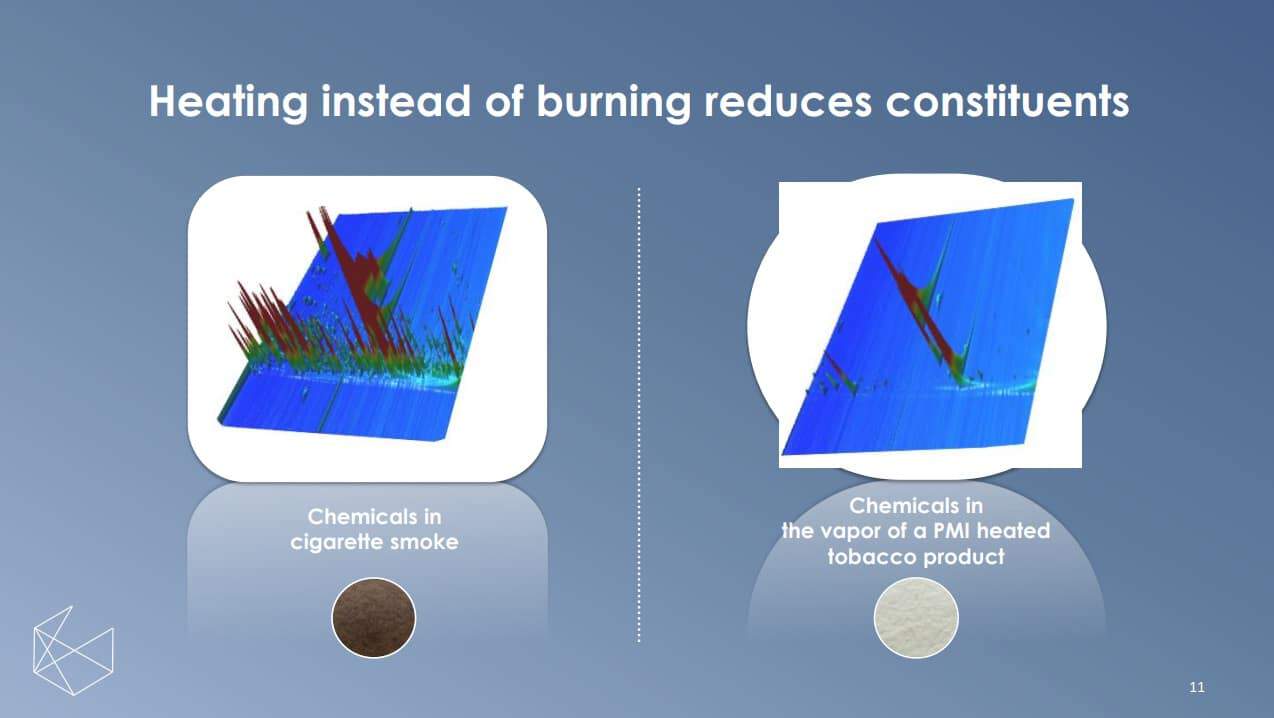
Just a heads up, if you buy something through our links, we may get a small share of the sale. It’s one of the ways we keep the lights on here. Click here for more.
The vaping debate in the United States and around the world is a continuous effort to battle misinformation with science and facts. As we’ve learned, people really don’t care about science and facts. They react to memes and worst-case scenarios shouted by the loudest detractors with the least amount of empirical evidence. There are always outliers. Last year, Philip Morris International (PMI) flew me out to its Cube facility in Neuchâtel, Switzerland to take a look at some of the science behind its plan to switch smokers to vapers.
I visited the Cube back in November and if you are wondering why it’s taken me so long to put some words together about it, it’s because the place is a fucking lot. Instead of an office building filled with office drones, typing away on their standard Dell keyboards and hanging around the water cooler, this place was filled to the brim with science.
Laboratories, testing equipment, math and actual scientists (and a pretty solid cafeteria). My anxiety went into hyper-drive and frankly, I was a bit overwhelmed. I knew places like this existed, places dedicated to science, discovery and exploring ideas, but the closest I’ve ever come to one was reading a Popular Mechanics in the bathroom at an auto repair shop.
Before we get into my visit to PMI’s Cube, let’s break down how this all shakes out, business-wise
PMI is Philip Morris International, which is not the same company as Philip Morris, which is owned by Altria. Altria, feeling pressure from the growing vape industry, recently purchased a large stake of Juul, a favorite of many vape heads around the world and with its own set of problems.
Meanwhile, PMI makes something called the IQOS, which we’ve reviewed here. The IQOS is branded and sold as a cigarette cessation device, rather than a standalone vape. Yet, the United States sees it as some sort of possible threat to children, even though it is in no way marketed towards non-smokers. The Cube is where the research and development for the IQOS and other smoking cessation devices take place.
The major selling point here and one that I’ve tried to get across to as many people as possible arguing against vaping on the grounds that kids might do it is that vaping is a safer alternative to cigarettes. Period. It’s much safer than death, and it’s much easier for smokers than just quitting or trying any other therapies. It still provides the same things smokers crave; that being nicotine delivery systems along with the psychological bond between a smoker and their cigarette.
Those of you who aren’t addicted to something (good for you) think it’s so easy to just quit, without realizing the psychological impact of trying to do so. Addiction is much more than just the thing one is addicted to, it’s as much about the routine and procedure as much as anything else.

The Cube focuses on tobacco harm reduction science
I was guided through the Cube facility by the Director of Scientific & Medical Affairs R&D, Dr. Patrick Picavet, a black turtleneck wearing, long goatee having heavy metal enthusiast who has published numerous peer-reviewed papers on smoking cessation. He immediately highlighted the fact that this place was filled to the brim with over 400 experts and scientists, responsible for over four thousand patents worldwide and another six thousand pending patents.
The goal at the Cube is discovering and refining the science responsible for risk-reduction through vaping. They convinced me, that yes, a tobacco company wants to create a smoke-free future.
How did they convince me you might ask, ironically clutching your carton of cigarettes to your chest. With science of course. Scientists, by nature, are impartial. Sure, they work for a tobacco company, but that doesn’t mean they are hanging out by the mall after work offering cigarettes to kids. Instead, they are working long hours refining a process, testing and re-testing, in order to help transition a tobacco company from a peddler of death sticks to a peddler of less-harmful vaping products.
The goal isn’t just to create the products that will transition the billion or so smokers to vapers, but to bring awareness to the data and science behind it. Smoking causes harm because of combustion; the fire that jump-started man out of caves and into a productive species is the same thing that is killing smokers. By creating products that eliminate combustion, PMI is hoping to inform the smoking-addicted public that taking up vaping can be just as satisfactory without anything near the amount of harm. An endless stream of research papers and science helps, but the public needs more than a bunch of math they don’t understand.
They need the science to do the work for them, then to be presented with a product that mimics smoking, without the harmful effects. This is Platform 1 of the Cube’s scientific approach. In this development platform, combustion is named as the problem to be solved. With the IQOS, it has been solved by eliminating all the harmful chemicals created by combustion. Within this platform, things like indoor air quality are tested, along with the actual levels of chemicals released by burning or by heating.
There is testing done in oxygen rich and oxygen deprived atmospheres, in cool labs with tech built for these specific purposes. The takeaway here is that heating tobacco versus burning it releases significantly fewer chemicals into your body and the air around you. Plus, you don’t stink. Here’s a visualization.

Heating vs. Burning
This leads to a toxicological assessment that seeks to demonstrate that the toxicity of the aerosol from smoke-free products is lower than that of cigarette smoke. And guess what? It is. From there we switch to learning about the clinical assessments, that show the changes in human physiology when it comes to reduced exposure to harmful chemicals and the response within the blood chemistry and functional health systems of human subjects.
Smokers who switched to Platform 1 (the IQOS) flat out saw a sea change in the harmful chemicals they were ingesting. All these clinical studies are registered on clinicaltrials.gov and list a bunch of chemicals that are super bad for you if you smoke and simply cease to exist if you switch to vaping.
Reduced exposure to chemicals created by combustion has a positive impact on smokers’ health risks. By switching to vaping, lipid metabolism, inflammation, endothelial dysfunction, clotting, oxidative stress, acute effect, airway impairment, genotoxicity all experience favorable changes when switching to vaping as a smoking cessation device.
I don’t know what all that stuff means. I’m not a doctor. After asking a generality, it basically means that smokers’ risks of things like cardiovascular (that’s your heart dummy) and cancer drop significantly when switching away from burning cigarettes.

Switching to vaping = less harmful chemicals = living longer
The thing is, and you can prove this by just talking to the smokers you know, is that smokers don’t want to just quit smoking or use something with the intent of quitting completely. The addiction is too strong, the psychological attachment is too strong. The scientists at the Cube know this and work that knowledge into their research. The focus isn’t to eventually funnel smokers into quitters (my daddy didn’t raise no quitter) but into vapers. Because, where’s the business sense in spending billions on researching smoking alternatives if it doesn’t result in converting current cigarette customers to vape customers?
Listen, the best I can do to explain the overwhelming science at the Cube is that it has a purpose. It’s not just science for the sake of science. These scientists work hard to prove and show through research studies and tests that smoking cessation is a real and viable option for smokers, as well as a new and viable business model for PMI and possibly its American counterpart, Altria. They are working to show, through science, that a tobacco company can still remain a tobacco company and deliver its product to the populace but via a delivery system that takes advantage of advances in science and technology with a fraction of the harm. A vape-using customer will be so a lot longer than a cigarette-smoking one.
You can take your own interactive tour of the Cube if you so desire, and check out all the cool science stuff that is working to extend the lives of smokers by proving that vaping is the future of nicotine and tobacco consumption. You can read more about the science being scienced at the Cube here if you like graphs, charts and science words. Side note: I totally want to move to Neuchâtel now. That place is just amazing.
What do you think? Are you a smoker that has switched to vaping? What do you think of PMI’s research? Let us know down below in the comments or carry the discussion over to our Twitter or Facebook.
Editors’ Recommendations:
- Juul just filed a lawsuit against other copycat e-cig manufacturers
- FlySense wants to tackle teen vaping and bullying in school bathrooms with a new sensor
- The FDA will soon prevent certain stores from selling candy and fruit-flavored e-cigarettes
- The human bone trade is booming on Instagram, because of course it is
- Mark Zuckerberg publicly posted his privacy thoughts
































